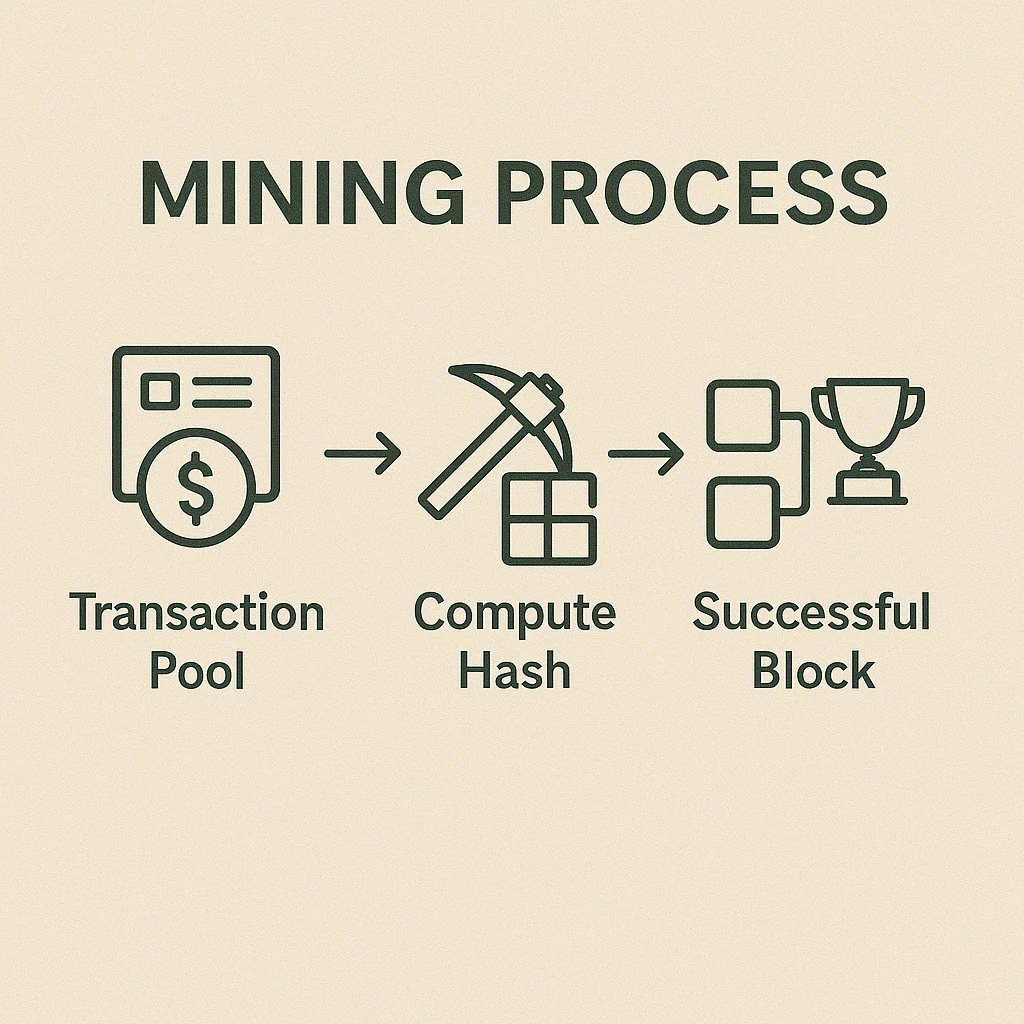Mining
Mining: How New Bitcoins Are Created
Bitcoin mining is the process that creates new bitcoins and secures the network. It’s like a global lottery where miners compete to solve mathematical puzzles for rewards.
Mining is the computational process of validating transactions and adding new blocks to a blockchain while earning newly created cryptocurrency as rewards. Miners use specialized hardware to compete for the right to create the next block.
How Mining Works
Proof of Work requires miners to find a specific number (called a nonce) that, when combined with transaction data, produces a hash starting with a certain number of zeros. This requires massive computational power and energy.
Block rewards compensate miners for their work – currently 6.25 Bitcoin per block, plus transaction fees. This reward halves every 210,000 blocks (roughly every 4 years).
Mining difficulty automatically adjusts every 2,016 blocks to maintain 10-minute block times regardless of total network computing power.

Real-World Examples
- ASIC miners like the Antminer S19 Pro can hash at 110 TH/s while consuming 3,250 watts
- Mining pools combine individual miners’ power to increase chances of earning rewards
- Large mining farms in countries with cheap electricity dominate hash rate distribution
Why Beginners Should Care
Mining secures the Bitcoin network through decentralized consensus. The more miners participate, the more secure and censorship-resistant Bitcoin becomes.
Individual mining is no longer profitable for most people due to competition from industrial operations. Most retail miners join pools to earn steady, smaller rewards rather than hoping for rare big wins.
Related Terms: Hash Rate, Proof of Work, Block Reward, Mining Pool
